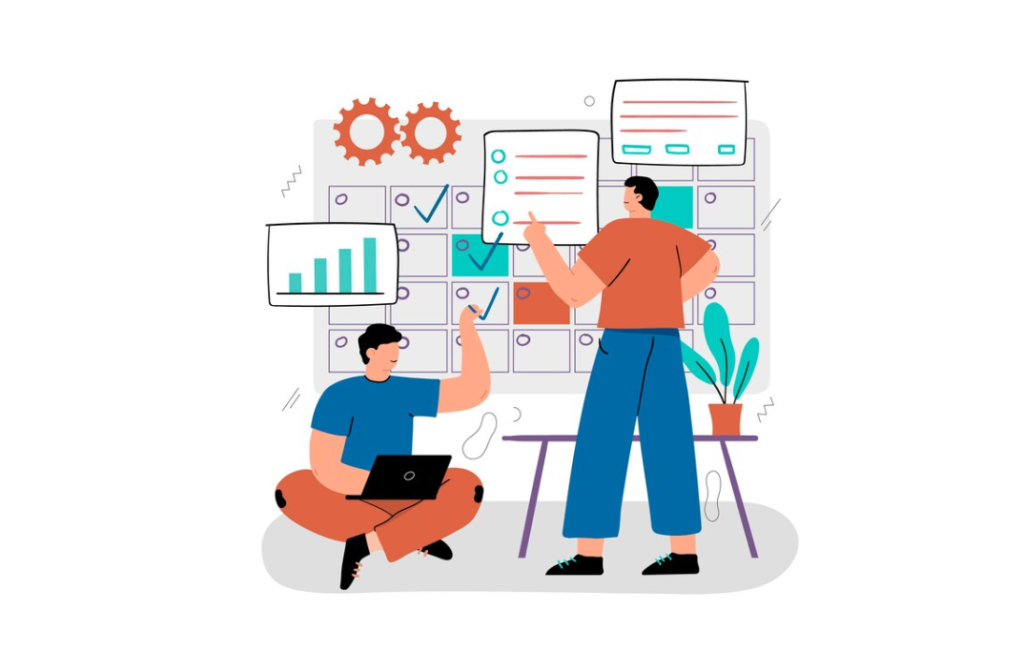Keys to Successful UX Project Management
Optimizing the user experience (UX) involves a continuous process aimed at minimizing design risks and tailoring the product to meet user requirements effectively. A UX project manager plays a crucial role in harmonizing the contributions from diverse team members such as executives, various managers, content experts, both front-end and back-end developers, quality assurance personnel, and product owners. Many project managers adopt a personalized mix of agile practices and project management tools to navigate these multifaceted challenges. This introduction serves as a gateway into the nuanced realm of UX project management.
Incorporating UX Design within Agile Methodologies
The Agile Scrum framework prioritizes delivering tangible results swiftly, aiming to get a functional product to the product owner promptly for direct feedback and collaborative adjustments.
This methodology is especially beneficial in the tech industry. Early involvement of the product owner ensures the project’s trajectory is in line with business objectives and user needs. It’s often challenging for the product owner to fully grasp user requirements until the design phase is underway.
Before initiating agile sprints, which are specific, timed phases of work, it is essential to lay the foundational strategy during what’s known as Iteration 0. Given the intensive and time-bound nature of sprints, having preliminary tasks like conducting interviews with stakeholders and users, developing personas, and formulating use cases completed is advantageous.

In the context of UX design, the agile approach facilitates the quick production and ongoing refinement of designs. This methodology supports a cycle of continuous design iteration and enhancement, making the process highly effective. Employing techniques such as sketching and wireframing, integral to Rapid Prototyping and Lean UX methods, contributes to this dynamic and flexible design process.
Role of UX Research in Agile Methodology
Integrating user research into agile sprints is key, using small-scale, formative tests to quickly gather insights. These research activities are pivotal in shaping the design process, analogous to how personas provide guidance.
- While external test participants are preferred for unbiased feedback, internal staff may suffice under tight time and logistical constraints. It’s vital, however, that these internal participants are not deeply familiar with the product and closely resemble the intended user personas, ensuring genuine user issues are detected post-launch;
- The objective of UX is to streamline the user’s journey in locating information, tools, or features, accurately anticipating their interaction outcomes with an application, and intuitively grasping the system’s functionality. Simplifying the UX is paramount, even in sophisticated software environments;
- Testing plays a vital role in UX design, offering crucial insights into user behavior and requirements. As UX designers conduct tests, they often discover new and valuable user interactions, which are then woven into the ongoing agile development cycles.
The essence of agile methodology is its emphasis on incremental, manageable software updates. This is highly compatible with formative UX practices, allowing for the assessment of discrete and independent modifications, thereby elevating the overall quality of UX design.
Project Management Tools for UX Designers
In the realm of UX project management, a variety of tools are utilized to enhance teamwork, communication, and task management:
- Basecamp: This tool offers a comprehensive project management solution, facilitating team interaction on projects and tasks;
- Slack: As a communication hub, Slack enables instant messaging and provides meeting functionalities, crucial for team coordination;
- Trello: Known for its user-friendly interface, Trello offers an agile-centric approach to task management, making project tracking more intuitive;
- Asana: This cloud-based tool offers versatile project management capabilities, including traditional task tracking and a more visual “post-it” style task management;
- Jira: Created by Atlassian, Jira is an effective tool for issue tracking, especially for bug tracking and agile project management;
- Smartsheet: This application focuses on collaboration and work management, featuring a spreadsheet-like interface that appeals to those familiar with spreadsheets. It’s used for task assignments, progress tracking, calendar management, document sharing, and other work-related activities.
Beyond these digital tools, many developers still rely on traditional methods like post-it notes and whiteboard annotations. The effectiveness of a process often transcends the sophistication of the tools used, highlighting the importance of a method that best suits the team’s needs and workflow.
The Complexity of Project Management in UX Design
Modern UX design, particularly in front-end development, requires a comprehensive understanding of various aspects including technology, design, research, marketing, and data analysis. This necessitates a multidisciplinary approach, whereby team members need to familiarize themselves with aspects outside of their core competencies.
UX designers must understand project management to anticipate potential challenges, and project managers must comprehend UX to manage deliverables feasibly. Both parties also need to understand user research and analysis; these skills are crucial to making informed design decisions within the project’s timeline and budget.
Agile Methodology and UX Design: A Perfect Match?
Agile methodology and UX design often go hand-in-hand, as agile encourages close collaboration between UX designers, end users, and product owners. This ensures a well-integrated UX within the overall solution, which is crucial for a project’s success.
Understanding the Value of UX in Business Strategy

The impact of UX is not confined to a product’s interface; it goes beyond it, shaping customer relationships and influencing business strategies. Incorporating UX insights can enrich business strategies and drive customer-centric growth. A well-executed UX strategy can foster customer loyalty and enhance brand perception.
As technology evolves, so does the field of UX, forcing designers and developers to continuously update their skills and methodologies. Emerging technologies like AI, VR, and IoT are reshaping UX, demanding a new approach to project management that encompasses these changes. There’s a growing trend towards personalization, accessibility, and mobile-first design, which will further influence the future of UX project management.
Conclusion
Project management in UX design is a complex, multidisciplinary task involving a variety of roles and methodologies. The successful delivery of a UX project requires a blend of agile strategies, UX research, and the use of effective project management tools. As the field continues to evolve, designers and developers must remain agile, adapting to new trends and technologies. Agile methodology, when used effectively, can empower UX designers to create products that not only meet business objectives, but also provide a seamless and enjoyable user experience.
